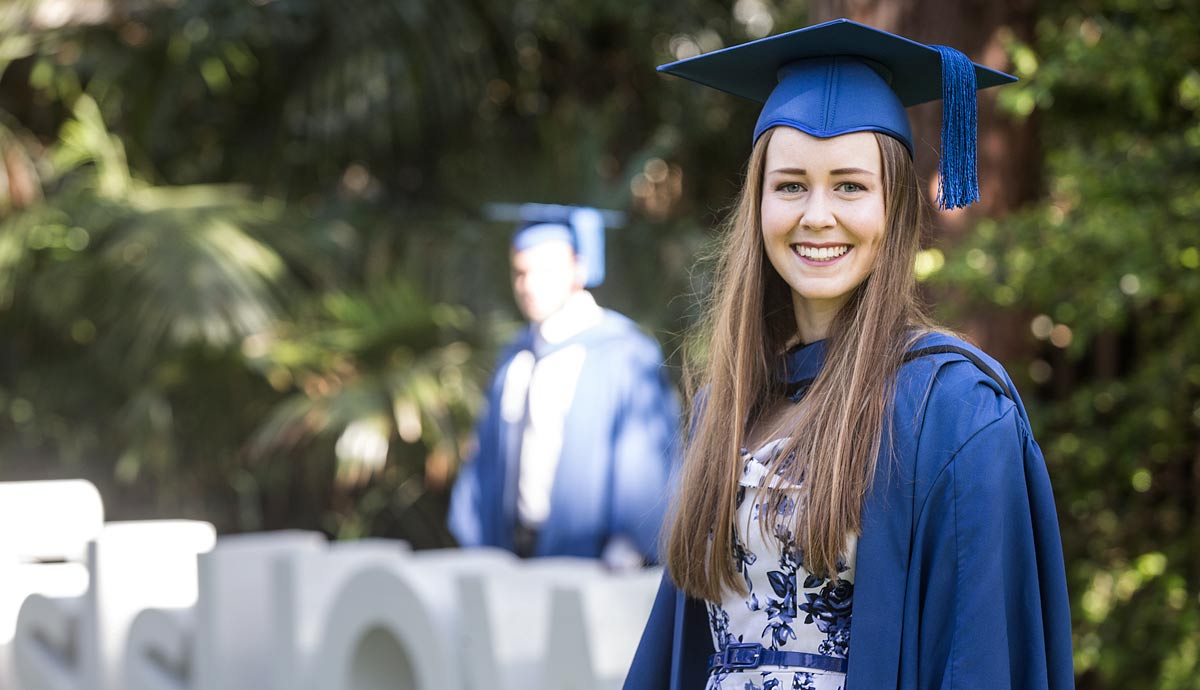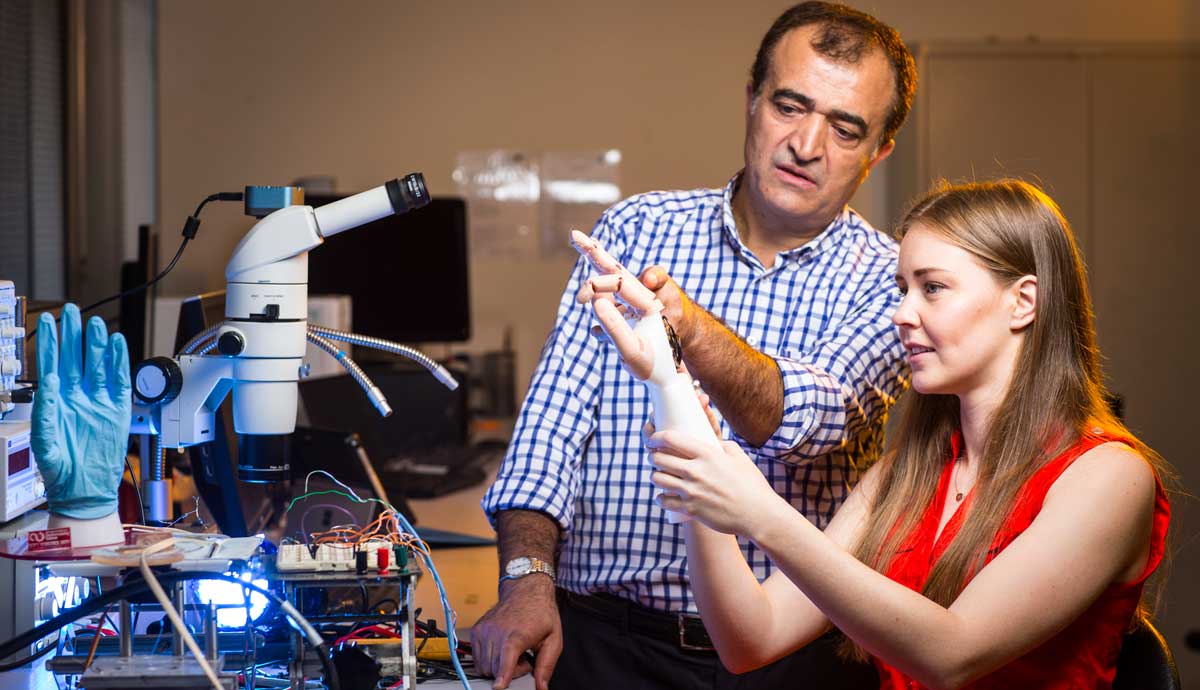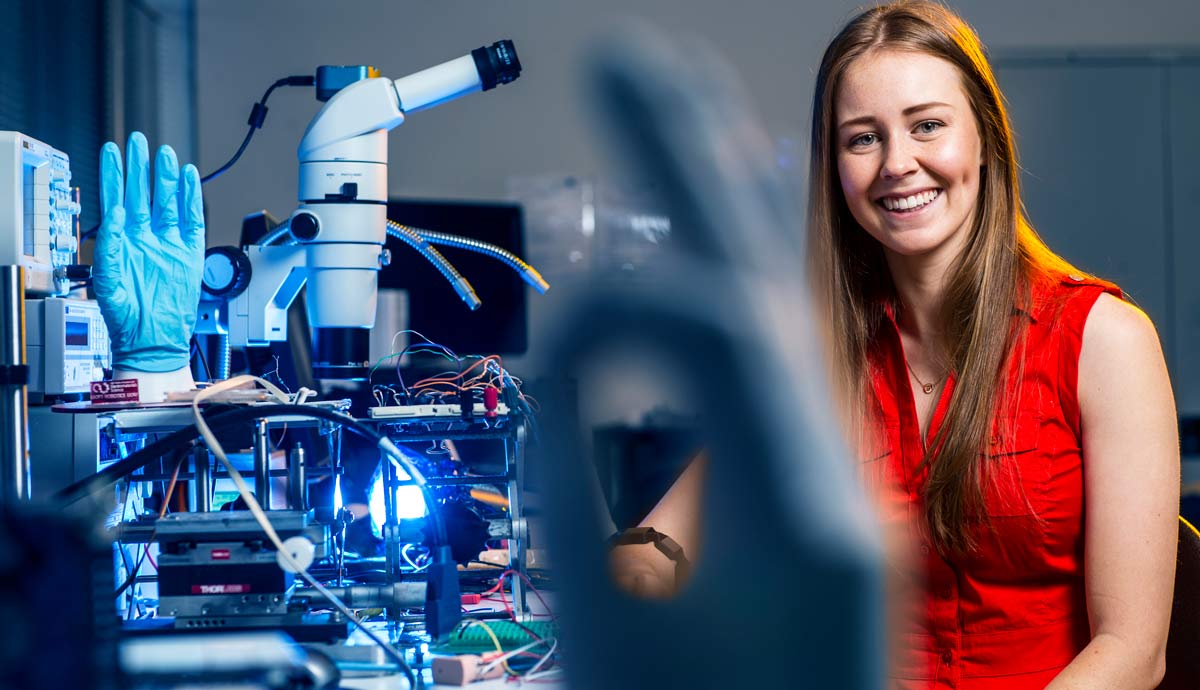December 13, 2017
Sensing a future in biomedical engineering
Engineering graduate’s body of work furthers development of prosthetic hands
Some years in the future, when an amputee can feel the hand of their loved one, or they’re able to precisely tap a smartphone, they’ll have a University of Wollongong graduate to thank.
Siobhan O’Brien today (13 December) celebrated her graduation, reflecting on five years of study in which she has completed a Bachelor of Mechanical Engineering (Honours) and Bachelor of Exercise Science.
She’s been an important member of a team of students and researchers, led by Professor Gursel Alici, who are at the forefront of developing prosthetic hands for amputees.
“I always wanted to do something with the body and at first I thought I’d do physiotherapy, but there wasn’t enough maths in it,” Siobhan said.
She grew up in the Wollongong suburb of Figtree and always had an affinity for maths, physics and challenging science-related subjects during her time at St Mary Star of the Sea College, which led her to enrol in the engineering and exercise science degrees concurrently.

Her interest in the human body and talent for engineering began to coalesce early in her degree, and a first-year summer scholarship project solidified the idea that biomedical engineering was her calling.
“During engineering subjects, there’d often be a random example of prosthetics to illustrate a concept. I’d be sitting in one class and could see how the two fields were linked.
“It really came together when I was doing the first-year project and I could see how engineering principles could be used to create new solutions for clinicians.”
Her first-year summer scholarship project involved using 3D scanning and printing equipment to design a 3D-printed orthotic shoe, testing the idea of using 3D printing to provide on-demand, individualised shoes for a range of foot conditions.
She moved from feet to hands when Professor Alici offered her an Honours year project with his soft robotics team, developing an “iron person”, as he likes to say, in reference to the powered exoskeleton suit worn by comic book and movie superhero Iron Man.
A goal of researchers ever since Luigi Galvani connected electrodes to frog legs and discovered electricity in tissue, has been to combine human and machine and overcome the limitations of human strength as well as to return movement and function to amputees.
While one part of Professor Alici’s team works on haptics, or touch, Siobhan is helping to solve issues on the command side: how to take signals from the brain and make a handmade of rubber and plastic move the way the wearer intends.

Electrical signals in the muscles can be detected on the skin, making possible the idea of a user-controlled prosthetic without invasive surgery.
Current commercially available sensors use a sticky gel to attach to the skin, which has a limited life-span and requires an amount of skin preparation to work effectively.
Siobhan has been investigating electrically conductive fabrics that would simply require the wearer to slip on a sleeve or compression garment.
“Some fabrics have silver in them or they are made from yarn that is dipped in conductive solution and then woven into a fabric that can be made into a garment,” she said.
Her fabric electrode was successfully able to signal a prosthetic hand to make six basic gestures that include an open palm, pointing, a thumbs up and so on.
“A person could possibly just wear a sleeve or compression garment rather than go through the process of attaching sticky sensors and connecting cables,” Siobhan said.
“When we look at the literature on prosthetics there’s about a 60 per cent rejection rate and most of the time the wearer says it’s because of discomfort or it’s annoying,” Siobhan said.
“We want to make something that better interfaces with the body and is a joy to wear.”
Siobhan was also awarded the University Medal, a prize for the highest achieving student across their undergraduate degree
“When I started my degree I expected to be taught to do certain things but instead it teaches you a way of thinking, to be more focussed on problem solving.”
